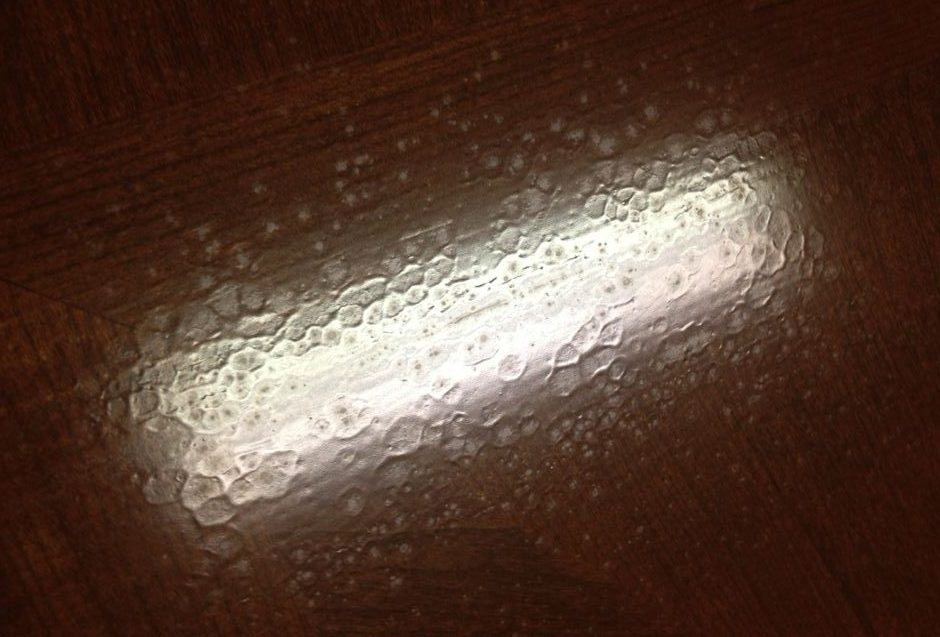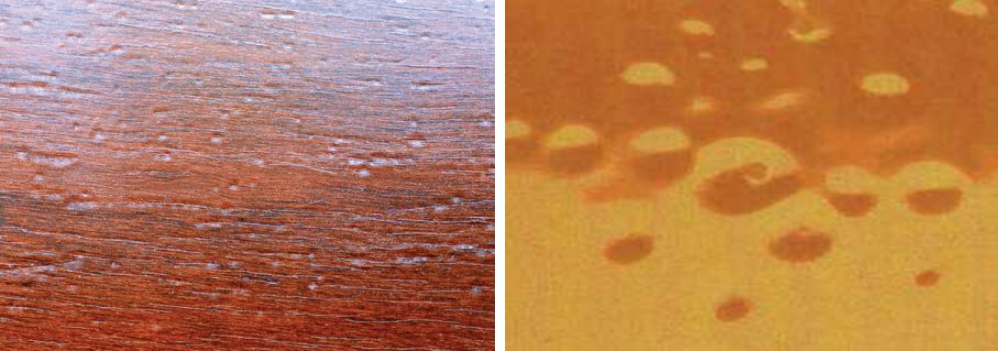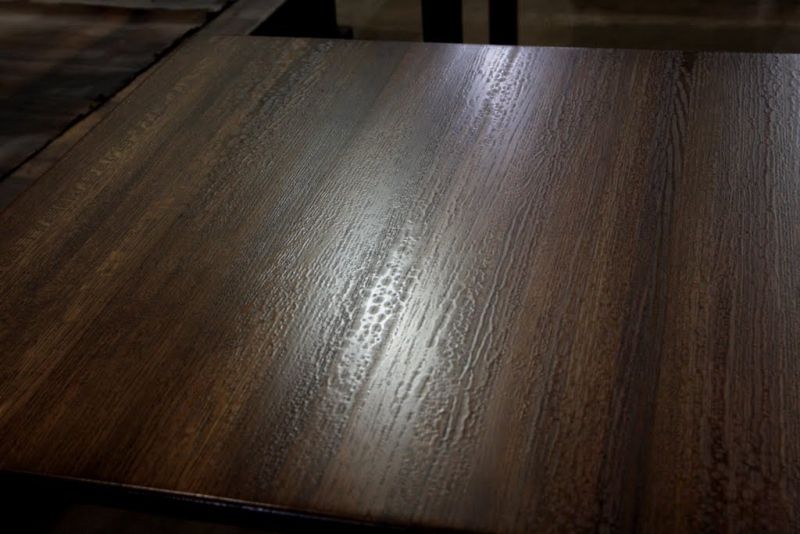Craters may appear in the film of a finished surface during or immediately after application. They look like circular discontinuities, not very large in size. To give you an idea, it's like when you spill water on a surface that has grease spots. Find out what causes it and how to solve the problem below.

Grease, oil or wax stains on the surface
There are several causes that can lead to the defect. The most common causes are grease, oil, wax or silicone stains on the surface to be varnished.
How do grease stains get on surfaces? Sometimes, through carelessness, it is enough to touch your greasy palms (with hand cream, for example) against the surface to be finished and the lake will "slip" at that point, forming the crater. Other times, oily substances (especially oil) can get into the compressor and the pressurized air will become contaminated. By loosening the surfaces with compressed air or even by spraying the varnish, the greasy substance gets on the surface and causes the defect.
What can we do to avoid this? Mounting filters on equipment and cleaning them thoroughly before use is one solution. Greasy substances can also get on the surface if dirty cloths with traces of grease, wax or oil are used for de-greasing. If you notice greasy spots on surfaces, or think they may be present, clean and degrease the surface with suitable solvents before applying the varnish.
Silicone can cause problems even when working with it at a great distance
If silicone has gotten on the surface, use a special solvent to remove it. Silicone is a material that can also cause discomfort if you work with it too far away from the finishing area.
I remember one such problem years ago in a factory. At some point, seemingly for no reason, craters started to appear on the surface. As usual, the first culprit was the lake. I decided to go there to see what was going on. As far as I knew, nothing had changed in the product formulation. The craters were clearly visible on the surface. My first step was to look for traces of grease, oil or wax, but I couldn't find any trace of any greasy substance that could have caused the problem. I did notice, however, that at the far end of the hall, windows were being fitted using silicone. The air currents would bring fine particles of silicone into the spray area and the defect would appear. Since then, every time I come across this defect, the first question I ask is whether they are working in the silicone area.

Other causes and ways to avoid craters
Another cause of craters is porous surface of the wood substrate. In this case it is recommended to use a pore-filling putty, and white grinding must be done very carefully.
Organic solvents that accidentally end up in water-based products can cause cratering. When working with both solvent-based and waterborne products, it is recommended to use different lines or equipment. If this is not possible, equipment should be thoroughly cleaned when changing materials and allowed to dry. The spray booth should be well ventilated for a long time to remove any solvent vapors.
Incorrect viscosity or the wrong diluent can lead to surface cratering. Follow the instructions in the technical and technological data sheets regarding these parameters to avoid them.
When refurbishing older furniture, the defect may occur if before furniture is not properly washed, degreased and sanded. Over the years, the furniture has been cleaned with "specific" commercially available materials (Pronto products). These contain wax and without cleaning the surface thoroughly, the furniture cannot be refinished.

Solutions to fix the crater defect
When the flaw has already appeared on the surface, there is not much you can do to fix it. If it has appeared after the primer has been applied, sand the dry coat of primer very well until the defect is completely removed, then apply a new coat.
If the defect has been caused by silicone and is on the top coat, a thin coat of anti-silicone solvent or a thin coat of varnish mixed with anti-silicone thinner can be sprayed on top. No other finish can be applied over this layer.
Have you wanted to refinish an old piece of furniture and cracks appeared? Now you have a possible answer. If you have faced such problems, have any questions or queries leave them below in the dedicated space. I will be sure to reply.
Other finishing defects:
Orange peel
Air bubbles. Stings in the film
Leaky lake
Cracks in the film
Lack of grip
Staining, discoloration, fading, color migration




































[...] Finishing defects - Craters / Fish eye [...]
[...] Finishing defects - Craters / Fish eye [...]
[...] Craters/Fish eye [...]
[...] Craters / Fish eye [...]